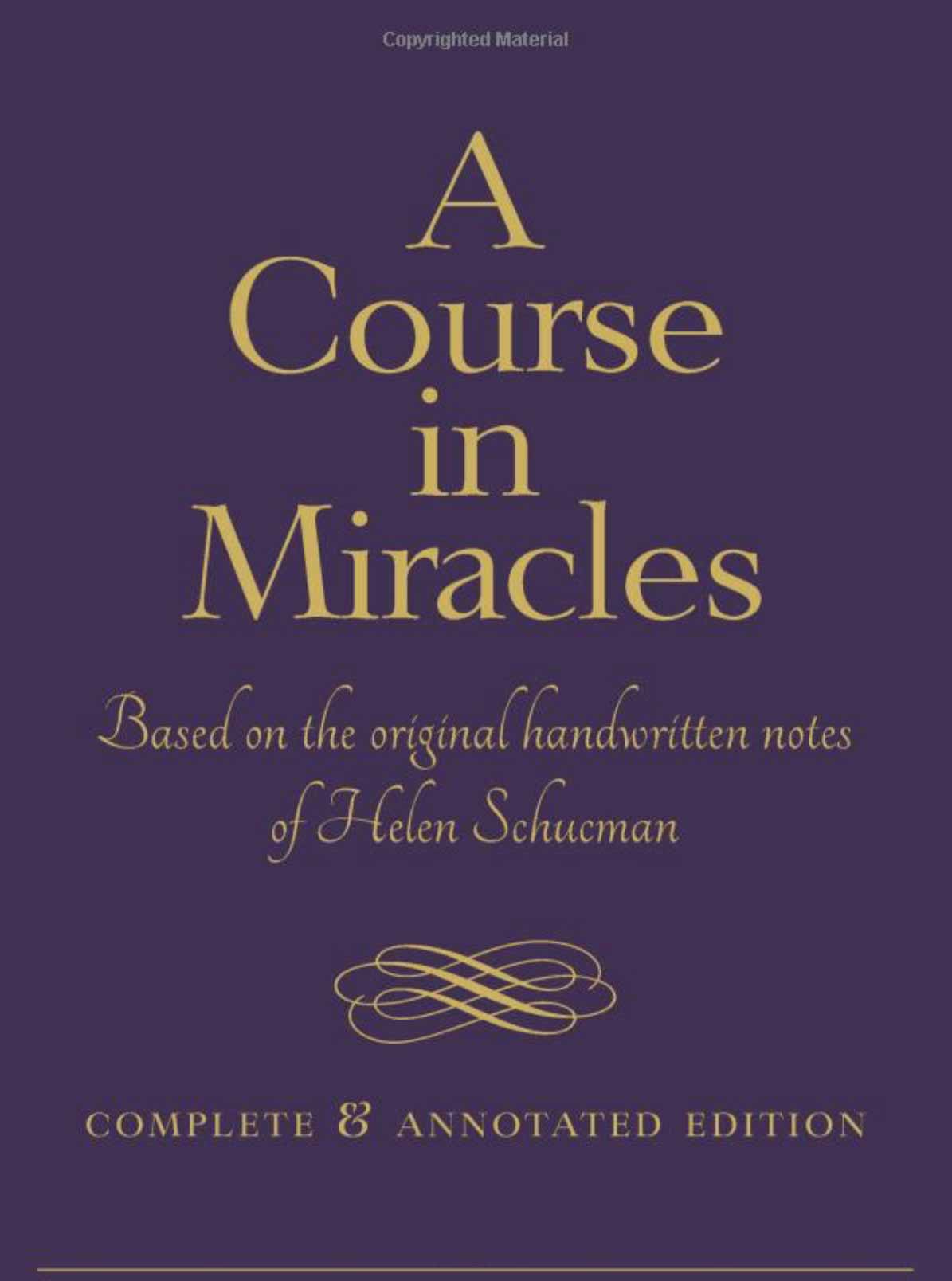A Course in Miracles has become a contemporary spiritual classic, devoted to teachings about who we are, our relationships to God and with each other, and the actually mental nature of our bodies and the world.
There are three constituent parts to the Course: The Text, a Workbook for Students, and the Manual for Teachers. The Text lays out the theoretical foundation for the metaphysical system of the Course. The Workbook contains a series of 365 Lessons to be practiced daily for the purpose of retraining the mind and healing our perception. Finally, the Manual contains information for and about advanced teachers of God. The Course is also about miracles, which students understand to be, in part, a shift in perception to healed vision. But miracles are more than a shift in perception, because the shift has consequences in the world as we see it. The Course is a self study educational program for retraining the mind that is spiritual, rather than religious, in its perspective. Although the Course uses Christian terminology, it expresses a universal experience, and its underlying ontology is reminiscent of ancient refrains, echoing the world’s most hallowed traditions.
Since it was originally published in 1976, readers have recognized in its words truths that they had never heard before, yet somewhere inside seemed to have always known. However, in the process of editing for publication, roughly forty-five thousand words were edited out, mostly from the first seven chapters of the Text, and the wording of the first four chapters was edited to the point where only about a fifth of their sentences retained their original wording.
The Complete and Annotated Edition aims to restore the material that was lost. It was created by going back to Helen’s shorthand Notes and editing afresh, retaining the original words to the maximum degree possible. By going back to the words that Helen Schucman heard in her mind and wrote down in her notebooks, it attempts to bring the reader into a more direct encounter with the power of those words. It includes, either in its main body or in appendices, those approximately forty-five thousand words that had been removed in the original published edition.
The teaching in this edition does not contradict the teaching found in other editions of A Course in Miracles. However, we believe that this edition will allow the Course’s true meaning and character to shine through a little more clearly. And we hope that this will enable students to better see the Course for what it is, relate to it as it is, and apply its profound truths to their lives.
Features of the Complete and Annotated Edition
* The first four chapters of the Text are roughly twice as long as they are in the familiar Foundation for Inner Peace edition.
* Material whose meaning had been changed by editing is now presented in its original form. For instance, we have restored the original statement “Prepare you not for the undoing of what never was,” which had been changed in the FIP edition to “Prepare you now for the undoing of what never was.”
* Material that had been rearranged and placed in a different order by editing has, in almost all cases, been restored to its original order.
* Extensive footnotes have been included to clarify difficult passages, identify unclear pronouns, define psychological terms, point out allusions to things in the general culture, and list Course references and Bible references.
* Thirty-three cameo essays have been written. These essays comment on personal guidance given by the source of the material to the scribes (Helen Schucman and William Thetford). This guidance, while too personal for the Course proper, clarifies the application of Course principles to the lives of the scribes, and by extension, to the lives of all students.
* Material that never made it out of Helen’s notebooks is included, such as this passage: “Love him steadily, whatever he does, whatever he says, and he will see the miracle of God and you will learn of salvation. If this seems hard to do, remember it is what you want of me.”
* Dictation that is too personal for the Course proper but too short to be the subject of a cameo essay is commented on in the Editing Notes (available online).
* All original emphasis of words is retained (either as italics or as gray underlines), as this helps illuminate the meaning.
* Most of the Text section titles and many of the Text section divisions are new.
* Documentation (and often explanation) of editing changes

Oops, you didn’t enter anything. Try again or contact us
Notifications
